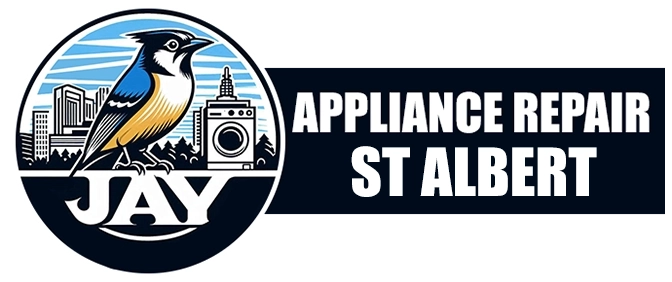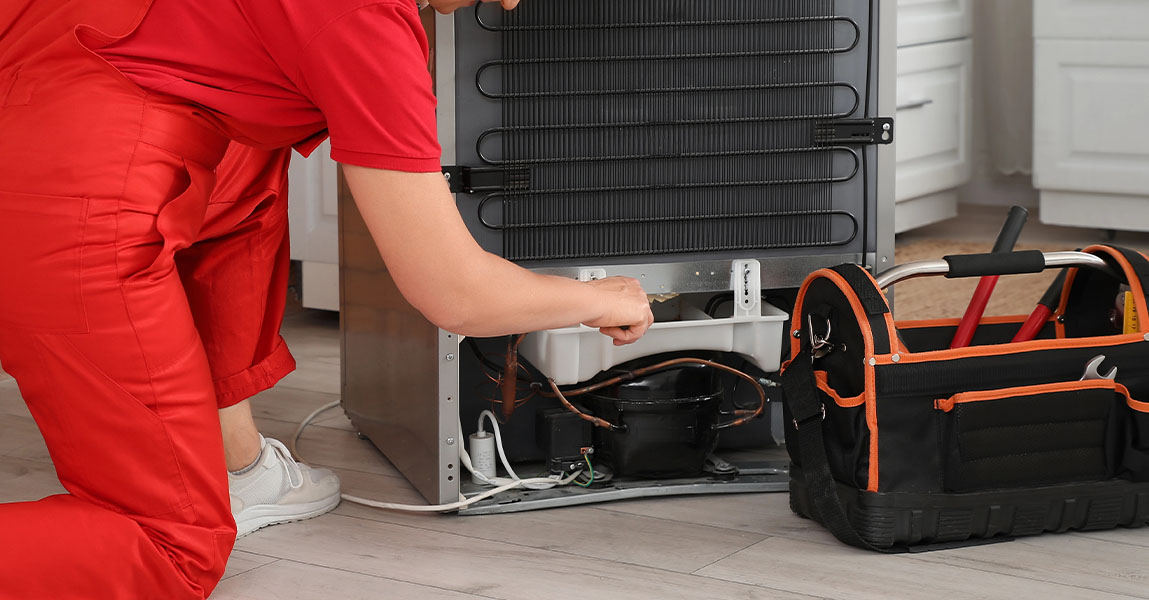A puddle forming under your fridge can cause more than just frustration. It might seem minor, but water on the floor can lead to floor damage, slipping hazards, and long-term issues if left untreated. We’ve seen this often at JAY Appliances, and one of the most common reasons is a blocked drain line.
In this post, we’ll break down why this happens, what signs to look for, how you might fix it yourself, and when it’s time to call for professional help. We’ll also cover a few extra tips to keep your fridge running efficiently and prevent this from happening again.
Why the Drain Line Matters
Every fridge has a drain line that carries away condensation and defrosted water. Normally, this water drips into a drain pan underneath the fridge and evaporates. However, when the drain line gets clogged, the water has nowhere to go. Consequently, it starts pooling inside the fridge or eventually spills out onto the floor.
Most importantly, this buildup usually happens slowly. In other words, by the time you notice the water on your floor, the blockage may have already been there for weeks. That’s why acting early can prevent a mess.
Common Signs of a Blocked Drain Line
The biggest clue is water on the floor near or underneath your fridge. However, there are other signs that help confirm the cause. For instance, you may notice water collecting in the bottom drawers or vegetable bins. That is to say, if the inside of your fridge feels damp or soggy at the base, your drain line might be clogged.
Another hint is a musty smell. Likewise, stale odors can indicate water is pooling and not draining as it should. Sometimes, you might even hear gurgling or dripping sounds from inside the fridge after the defrost cycle runs. In short, any strange behavior involving moisture should prompt a closer look.
How the Drain Line Gets Clogged
Most clogs are caused by a buildup of food particles, dirt, mold, or ice. Over time, crumbs or debris can collect in the drain hole, gradually preventing water from flowing through. Similarly, mold or algae can grow in warm, damp areas, especially during humid seasons.
During winter, it’s common for water to freeze in the line itself. This can be particularly frustrating. To clarify, even though your fridge generates heat during defrost cycles, a frozen line can block water drainage until it melts again.
If your fridge is located in a colder room, such as a garage or poorly insulated kitchen corner, this issue becomes even more likely. In these cases, simple temperature changes can affect performance.
Checking the Drain Line Yourself
You can start by locating the drain hole. It’s usually found near the back wall of the fridge, inside the main compartment just above the vegetable bins. Firstly, remove any drawers or bins in the way. After that, check if the drain hole is visibly clogged.
Use a flashlight to get a better look. If you see food bits or gunk, gently clear it using a soft pipe cleaner or a small straw brush. Do not use anything sharp that could damage the plastic. Secondly, flush the hole with a small amount of warm water using a turkey baster or squeeze bottle.
This helps push debris down the line and clear minor blockages. If the water doesn’t drain, or if it backs up, the clog might be deeper. In that case, it’s best to stop and consider calling professionals.
You can learn more about the issue and possible fixes by exploring fridge repair in St Albert. There are cases when DIY is possible, but deeper clogs can require removing back panels and careful tube cleaning.
Preventing Future Drain Line Clogs
Prevention is easier than cleanup. That is why regular maintenance goes a long way. Once a month, wipe down the inside of the fridge, especially the area near the drain hole. Similarly, avoid leaving open containers or leaky packaging inside that could spill and lead to buildup.
Additionally, check the drain hole every couple of months. Run a small amount of warm water through it to ensure it stays clear. Likewise, during deep cleans, vacuum the coil area and remove dust that can affect airflow and temperature.
If your home has fluctuating indoor temperatures, try to keep the fridge in a stable environment. Sudden cold or heat can interfere with how the defrost system operates. In the same vein, an overly packed fridge can block airflow, leading to uneven cooling and more condensation.
When the Issue Is Beyond DIY
There’s only so much you can do with basic tools. If water continues to pool under the fridge even after you’ve cleaned the drain hole, it may be time for professional help. In some cases, the entire drain tube may need to be replaced.
Moreover, persistent leaks might not even be caused by the drain line. Faulty water filters, damaged door seals, or issues with the defrost system can also result in puddles. For peace of mind, having a technician assess the situation can save you time and money.
If you’re in the area, it’s easy to get quick and honest support with appliance repair in St Albert. Having someone experienced inspect your fridge can prevent future damage and ensure your appliance runs as it should.
What to Do About Floor Damage
A leaky fridge can leave your flooring vulnerable. Even a few days of pooled water can warp hardwood or damage laminate. Firstly, dry the area thoroughly using towels or a wet vacuum. After that, lift the fridge slightly to inspect underneath.
If you find mold or softened material, you may need to treat or replace that section. To clarify, floor damage can develop quietly under appliances. That’s why we always suggest checking more than just the visible area.
If the leak is ongoing or uncertain, place a towel under the fridge until the repair is complete. This won’t solve the problem, but it can prevent further water spread while you troubleshoot or wait for service.
A Helpful Tip Most People Miss
Here’s something not everyone considers. Sometimes, the drain pan at the bottom of the fridge can become full or misaligned. While it’s designed to evaporate water naturally, it may overflow if dirty or tilted. Check this tray periodically.
To do so, unplug the fridge and carefully pull it away from the wall. Look near the bottom rear of the unit. If the pan is full or smells musty, remove it, clean it with soap and water, and replace it evenly. This small task helps with airflow and reduces odor too.
Likewise, if your fridge is leaking and you can’t find any clog or visible issue, the pan might be to blame. It’s a small thing, but it can make a big difference.
Still Leaking? Let’s Take a Look
If the leak persists despite your best efforts, you don’t need to keep guessing. A blocked drain line is one possible reason, but as we’ve covered, there are others. Most importantly, timely inspection prevents further complications.
We’re always ready to help with fridge and freezer problems, whether it’s a leak, strange noise, or cooling issue. If you need support or just want to ask a question, contact us today. You’ll get clear answers and practical help.
FAQs
What causes a fridge drain line to get blocked?
A buildup of food debris, mold, or frozen water can block the drain line over time. Regular cleaning helps prevent this.
Is it safe to clean the fridge drain line myself?
Yes, as long as you use gentle tools like warm water and a soft brush. Avoid using anything sharp that could damage the parts.
Why is there water inside the fridge drawers?
Water often collects in the drawers when the drain line is blocked. This causes moisture to build up and settle at the bottom.
Can a clogged drain line damage my fridge?
It won’t usually damage the fridge itself, but the extra moisture can lead to mold, odors, and floor damage if ignored too long.
How do I know if the drain pan is the problem?
If the drain pan is full, dirty, or misaligned, it may overflow. Checking and cleaning it regularly is a good maintenance habit.

